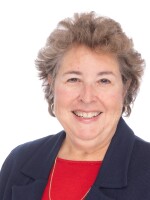Virginia has now received more than a million doses of COVID-19 vaccine and more than 80% of those have been administered. The way that’s being done has raised some troubling questions, but overall officials say things are getting better.
The old Kmart store in Charlottesville has been closed for years, but there’s a giant white tent in the parking lot and a greeter on duty now – a volunteer charged with getting people in for COVID-19 vaccination.
“We ask that you stay in your car until about five minutes before your appointment time," she says. "You can see the line of people already standing there, distanced apart, and so that’s the building where you’ll go for your vaccine.”
Nearby, national guardsmen are checking IDs and taking care of paperwork.
Many of the people getting shots today are young and appear healthy. That’s because the state made teachers and daycare workers a priority along with firemen and police, prisoners and residents of homeless shelters.
Others over the age of 75 are still waiting along with those who have medical problems putting them at risk for a dangerous case of COVID. The district says they may not be vaccinated until April.
That doesn’t surprise Vivian Reifberg, a professor at UVA’s Darden School of Business who has worked in healthcare and pharmaceuticals. She blames a lack of guidance from the federal government.
“You have people reinventing the wheel unfortunately in each state, in each county and then in each local hospital system,” she explains.
At UVA, for example, people employed by the medical center to do billing and other work from home were vaccinated right along with doctors and nurses. Links that allowed medical personnel to register for vaccination circulated on social media, allowing students and non-medical staff to sign-up. The university says it is now checking ID’s, but an unknown number of people not eligible for shots may have gotten them.
Meanwhile, Sentara Healthcare says it will be giving vaccine to some of its patients, even though people getting their care from a competing medical service might be at greater risk from COVID.
Still, Reifberg is encouraged by three developments. First, the Biden Administration has a game plan for getting vaccine from factories to people’s arms, and it’s now sharing that information with states.
“People can do better planning when they know what they can count on," Reifberg says. "One of the first things the new administration did announce was that they’re going to try to provide a rolling 3-week view of what the states can expect to get in terms of supply of vaccine.”
Second, she thinks it’s good to have the national guard helping out.
“Because when you set up a vaccine site there are many things that go into it that are not just delivery of the shot -- everything from parking, to making sure forms are filled out to keeping people physically distant to checking people in.”
And – finally – she’s excited that Johnson and Johnson’s vaccine was 72% effective in U.S. studies. That’s not as good as vaccines already on the market. They’re more than 90% effective, but Reifberg says no one in Johnson and Johnson’s clinical trials required hospitalization or died, and the product offers other advantages.
“Johnson and Johnson has one shot, easy storage and could be a game changer in terms of volume. It really was effective with respect to severe disease it looks like, and that’s one of the big things we’re after.”
Those who could benefit most are people at the back of the line in priority group 1 B – grocery store workers, bus drivers and mail carriers or in group 1C – folks with certain underlying medical conditions, college professors, lawyers and – yes – reporters.


